Messerschmitt Bf 109-E7
-
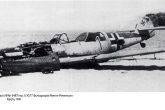
Bf-109 S/N WNr-3487 of 5/JG77 (Werner Peterman) -
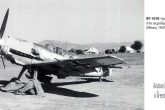
Bf-109 of 5/G77 in Molaos airfield, May 1941 -

Messerschmitt Bf-109 of III/JG77 whilst being serviced in Molaos airfield in Lakonia (1941) -

Bf-109 painted with the colors chosen for the Battle of Crete by Stab II/JG77 -
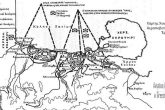
Map of Soyda cove. Operation Mercury. -
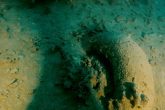
One of the two front tyres -

Two of the plane’s engine blades -
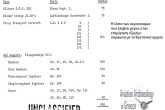
The list of planes that participated in Mercury operation, according to the British records -

he rear end of the plane (photo: Nikolas Giannoulakis) -

Scattered parts of the plane (archive of Areti Kominou) -
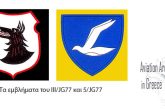
Emblems of IIIJG77 and 5JG77 -

Armament of Messerschmitt Bf-10 -
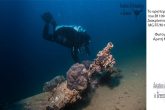
Part of the left wing. The 20mm MG FF/M machinegun is easily noticeable -
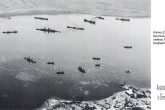
Souda cove in 1941. British ships are under attack by German bombers. -

Video of the wreck of Messerschmitt Bf-109
The history
On the morning of 20th of May, 1941, the Germans launched Operation “Merkur” (Mercury) to occupy Crete. It was a unique airborne operation in World War II, relying entirely on air power. Almost 1,300 German aircraft of all types participated in the battle of Crete. Notably, 44% of the 10,000 paratroopers involved were killed in the first days. British records indicate the destruction of 220 aircraft and serious damage to 150. The Souda Bay suffered intense bombardments as it was the base of the Allied fleet. German planes faced strong anti-aircraft fire, leading to the downing of a significant number.
According to German and British archives, it is believed that the wreckage in Souda Bay is a Messerschmitt Bf 109-E7 with the serial number Werk No 4173 (12/39), piloted by Berthold Jung.
Berthold Jung, a German Navy pilot, voluntarily joined the German Air Force fighter squadron before the war. After his aircraft was hit over Chania, he became a prisoner of war in Australia until 1947. Upon his release, he returned to Stuttgart, worked as an interpreter, and later rose to the rank of Rear Admiral in the post-war German Navy. After retiring in 1973, he served as the President of the German Red Cross in Kiel until his death in 1992.
The aircraft
The Messerschmitt Bf 109-E7 was a renowned fighter aircraft, ranking among the top five successful fighters in aviation history. Designed by Willy Messerschmitt and Robert Lusser, it was produced from 1939 to 1945, with around 30,500 units manufactured, constituting 47% of the total German aircraft production during World War II. The Bf 109 achieved the most enemy aircraft downings during the war.
In the battle of Crete, 90 Bf 109 E3-E7 series aircraft, nicknamed “Emil,” participated. The Bf 109 E7, like the one in Souda Bay, was armed with various weapons, including machine guns and cannons.
Specifications of the Messerschmitt Bf 109-E7:
• Type: Single-seat Fighter
• Length: 8.74 m
• Wingspan: 9.86 m
• Height: 3.40 m
• Wing Area: 16.16 sq m
• Weight: 2014 kg
• Engine: 1× Daimler-Benz DB 601N liquid-cooled V12, 1,200 hp
• Maximum Speed: 578 km/h at 12,300 feet
• Maximum Operational Altitude: 36,500 feet
• Range: 600-850 km depending on equipment
The wreck
The wreckage is located in the area of Kalamis in the bay of Souda, upside down on the seabed in shallow waters, at a depth of 39 to 41 meters. Several parts of it are buried in the muddy seabed, such as the engine with the propeller. The cockpit is missing, while one wing is located a few meters shallower with its armament. The frequent low visibility prevents divers from enjoying the details of the aircraft. However, this atmospheric condition has its own beauty.
Text: Nikos Karatzas – Historical research: HeraklisRoussis, Nikos Karatzas
Wreck description, credit to AntonisGrafas.
Bibliography:
• JochenPrien Geschichte des Jagdgeschwaders 77 Teil 1 X. EinsatzimBalkanfeldzug und bei der BesetzungKretas
• Air Borne Invasion of Crete “The Battle of Crete, May 20 – June 1, 1941,” issued October 15, 1941.
• Warplanes of the Luftwaffe Combat Aircraft of Hitler’s Luftwaffe 1939-1945 by David Donald
• ΓΕΣ/ΔΙΣ, Η Μάχη της Κρήτης, Athens, 1961

